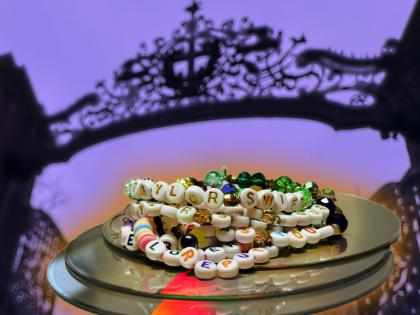
 Five hundred and ninety-nine buttons, pins, badges, and ribbons, the cinders of old strife, lie at Houghton Library in three linear feet of boxes containing the Frederick W.C. Lieder political button collection. Here are battle cries from United States presidential campaigns from 1856 through 1912 and from miscellaneous lower-level contests, as well as souvenirs of state events see Ulysses S. Grant surmounted by an eagle, below, for the dedication of his Tomb in 1897.
Five hundred and ninety-nine buttons, pins, badges, and ribbons, the cinders of old strife, lie at Houghton Library in three linear feet of boxes containing the Frederick W.C. Lieder political button collection. Here are battle cries from United States presidential campaigns from 1856 through 1912 and from miscellaneous lower-level contests, as well as souvenirs of state events see Ulysses S. Grant surmounted by an eagle, below, for the dedication of his Tomb in 1897.
In 1873 Congress demonitized silver, shifting from a bimetallic to a gold standard, an act that would soon ignite political controversy lasting for decades. At the Democratic National Convention in Chicago in 1896, William Jennings Bryan, who held that the gold standard had caused deflation and favored the rich over the poor, called for a return to the bimetallic standard. In his famous "Cross of Gold" oration, he argued that, "There are two ideas of government. There are those who believe that, if you will only legislate to make the well-to-do prosperous, their prosperity will leak through on those below. The Democratic idea, however, has been that if you legislate to make the masses prosperous, their prosperity will find its way up through every class which rests upon them....We will answer their demand for a gold standard by saying to them: You shall not press down upon the brow of labor this crown of thorns, you shall not crucify mankind upon a cross of gold." 
Bryan was nominated for president the next day, ran against Republican William McKinley, and lost. The sunburst pin with Bryan's photograph, above left; the photographic button with star-spangled bow at right; and the "WELL I GUESS YES" button (one pulls on the protuberance at bottom and "BRYAN" pops up) are from that campaign. The silver-colored "I NEVER USE GOLD DO YOU?" stud at top may date from the 1896 contest or another, for the issue had legs. Bryan ran again in 1900, on a platform condemning imperialism as well as the gold standard. President McKinley's vice-presidential running mate was Theodore Roosevelt, A.B. 1880, LL.D. '02. (When one pushes the stinger of the bug above, its wings fold out to show photographs of the gold-bug candidates.) 
Bryan lost, McKinley was assassinated in 1901, and Roosevelt became president. The big button above is from his 1904 campaign, in which he ran against Democrat Alton Parker, who insisted that his party's platform accept the gold standard. 
Lieder, who gave his button collection to Harvard in 1919, earned his Ph.D. here in 1907 and stayed on as professor of Germanic languages. Leslie Morris, curator of manuscripts (and buttons), states that she does not know Professor Lieder's political persuasion.







